A Tale of Two Cities
Background of the novel, historical context.
Though the French Revolution could not achieve its ultimate goal and turn into a chaotic bloodbath, it played an important role in influencing the modern nation by portraying the inherent power of will of the common people.

Literary Context
The novelists like Dickens, Scott, and Eliot used the genre of historical fiction to talk about the problems that were prevailing in their societies. They would use the events of the past to reveal the present to revolve around the crisis. The novels of these novelists discuss how individuals are created and shaped by political history and vice versa.
A Tale of Two Cities Summary
The wealthy aristocrats of France ignore the misery of poor people who are dying due to hunger and are staggering in luxury. The carriage of Marquis St. Evremonde, a wealthy aristocrat, irresponsibly runs over a child and kills him.
A Tale of Two Cities Characters Analysis
Sydney carton.
Though, in his conversation with Charles Darnay, who has been recently proved guiltless, comments about Lucie. However, his tone was sardonic and bitter and let down his growing interest and developing feelings for Lucie. Ultimately, he gathers courage and confesses his feelings for Lucie to her. Unknowing that Lucie and Darnay are soon going to marry, he proposes his love for Lucie and also claims that he is not worthy of her. This event changes the life of Sidney Carton and makes the basis for the sacrifice that Sidney makes for Lucie at the end of the novel.
Madame Defarge
The oppression of aristocrats has mage Madame Defarge, an oppressor; likewise, the victims of the oppression of Madame Defarge will turn out oppressors as well. Madame Defarge dies with the shot of her own gun. Through this, Dickens symbolizes that the revengeful attitude that Madame Defarge embodies turns out to be self-damning.
Charles Darnay (a.k.a. Charles Evrémonde)
Lucie manette.
She is the daughter of Dr. Alexandre Manette and wife of Charles’ Darnay. She resurrects or restores her father back to life after eighteen years of imprisonment. She has the qualities of devotion, innocence, and enduring love. In the novel, she is the main figure which symbolizes goodness and laces a “golden thread” that binds together an essential group of people against the cruel forces of politics and history. She also displays religious faith. She believes in Sydney Carton when no one else believes in him. It is her kindness that inspires Sidney for his utmost deed of sacrifice.
Dr. Alexandre Manette
Monsieur defarge, jarvis lorry.
With the development of the plot of the novel, the character of Jarvis Lorry changes from a purely pragmatic and minding-one’s-own-business to an intense and loyal person who devotes his life to protect the family of Dr. Manette and thus become a member of Manette’s family. When Mr. Lorry first meets with Lucie, he asserts that “I had no feelings and that all relationships I hold with my fellow-creatures are mere business relations.”
Jerry Cruncher
Marquis evrémonde, mr. stryver, john barsad or roger cly.
He is the servant of Evremondes and is charged with the allegation of keeping the estate of Evremondes after the death of Marquis Evremonde. The revolutionaries imprisoned him, and he wrote a letter to Charles Darnay for him. This letter makes Darnay visit France and save him.
Themes in A Tale of Two Cities
Resurrection and transformation, the inevitability of sacrifice, the propensity to fierceness and tyranny in revolutionaries, oppression and revolution, secrecy and surveillance, fate and history.
Lucie Manette and Madame Defarge identify with the Fates – the mythological goddesses who actually control the “threads.” Lucie is titled as the “golden thread,” whereas Madame Defarge is seen as constantly knitting in the novel. The novel A Tale of Two Cities is concerned with the theme of human destiny due to the presence of these two “Fate” characters. The novel deals with how history shapes the fate of the individual. In the novel, Dr. Manette and Charles Darnay try to change their destinies. Charles makes his way to England and tries to escape the cruel history of his family; however, circumstances made him go to France and face the consequences of his family’s past. Similarly, Dr. Manette uses his connection and influence to rescue Charles Darnay; however, he forgets his own letter that causes his execution. Dickens suggests that forces of history cannot be defeated by political influences but by self-sacrifice.
A Tale of Two Cities Analysis
The readers learn about the causes of Madame Defarge’s action at the end of the novel. However, they have been driving the plot and reflect that how history discloses. The chaotic Revolution does not start all of a sudden; it is the result of the decades’ old exploitation and injustices by power. Likewise, the crimes that were committed years before by the old generation haunted the new generation and held them accountable for it.
Abstract ideas and concepts in a literary text are represented by objects, characters, and figures. Following are the symbols in the novel A Tale of Two Cities by Charles Dickens
The wine shop of Madame Defarge and Monsieur Defarge is the center where revolutionary planning is going on secretly. The wine in the novel symbolizes the strong power of the French Revolution. The revolutionaries, drunk on power, turned from the freedom fighters into the wild beasts on the streets murdering everyone. The deep red color of the wine shows the red color of the blood. When the wine drops from the container, the people rush towards it. It shows how these people are bloodthirsty. Just like the wine everywhere on the streets when the sailor could not transport it to the shop properly, after the Revolution, blood is everywhere.
Golden Thread and knitting
Footsteps and shoes.
Lucie hears the footsteps of all the people coming into the lives of Manette’s family. These footsteps symbolize fate. It shows how the fate of Lucie is connected with people coming into her life. Similarly, in his madness, Dr. Manette is always seen as making shoes. Shoes are the symbol of the inevitable past.
The Marquis
The character of the Marquis Evrémonde is an archetype of wicked and corrupt social institutions. He exploits the lives of peasants and is completely indifferent to their sufferings. Marquis is a symbol of the brutal aristocrat and cruelty that drives the peasants to revolt against them.
Dickens does not compare the two cities or characters by placing them opposite to each other, and he also creates the twins that make the plot of the novel melodramatic. The character of Darnay resembles Sidney Carton in looks. Carton saves the life of Sidney twice by taking advantage of his resemblance to Charles Darney.
Imprisonment
Setting of the novel, point of view.
The point of view of the novel A Tale of Two Cities has a third-person omniscient. The events of the plot are recounted by the all-knowing and all-seeing narrator. The narrator also provides an understanding of the feelings and thoughts of the characters. The point of view helps to provide a thorough perspective on the historical events that occur in different places. It also allows the panoramic view of all the events taking place in the two cities: London and Paris.
The plot of historical fiction is set before the time it is actually written. It provides a critical view of the events of the past and helps the readers to think more critically than the facts given by historians.
More From Charles Dickens
Home — Essay Samples — Literature — Books — A Tale of Two Cities
Essays on A Tale of Two Cities
Prompt examples for "a tale of two cities" essays, the theme of resurrection.
Explore the theme of resurrection in "A Tale of Two Cities." How does the concept of resurrection manifest in various characters and situations throughout the novel, and what is its significance?
Character Analysis: Sydney Carton
Analyze the character of Sydney Carton. How does his transformation and ultimate sacrifice contribute to the themes and message of the novel?
The Contrasting Cities of London and Paris
Compare and contrast the cities of London and Paris as depicted in the novel. How do these settings represent different aspects of society and revolution?
The Role of Fate and Coincidence
Discuss the role of fate and coincidence in the lives of the characters. How do chance encounters and twists of fate drive the plot and shape the characters' destinies?
Social Injustice and Class Struggles
Examine the themes of social injustice and class struggles in "A Tale of Two Cities." How do these issues lead to the French Revolution, and what commentary does Dickens offer on society?
The Sacrifice of Darnay and Carton
Discuss the theme of sacrifice in the novel, focusing on the sacrifices made by Charles Darnay and Sydney Carton. What motivates their sacrifices, and what do they achieve?
The Influence of History and Politics
Analyze the historical and political context of the novel. How do real historical events, such as the French Revolution, impact the story and its characters?
The Role of Women in "A Tale of Two Cities"
Examine the portrayal and significance of female characters in the novel, such as Lucie Manette and Madame Defarge. How do they contribute to the themes and conflicts of the story?

Violence and Revenge
Discuss the themes of violence and revenge in the novel. How do these themes drive the actions of characters and influence the outcome of the story?
Dickens's Commentary on Humanity
Explore Charles Dickens's commentary on the nature of humanity and the possibility of redemption as presented in "A Tale of Two Cities."
The Symbolism of Monseigneur in a Tale of Two Cities
The meaning and significance in a tale of two cities, made-to-order essay as fast as you need it.
Each essay is customized to cater to your unique preferences
+ experts online
Fate in a Tale of Two Cities
The theme of light versus darkness in a tale of two cities, a tale of two cities: resurrection theme, how charles dicken uses death as a liberation in a tale of two cities, let us write you an essay from scratch.
- 450+ experts on 30 subjects ready to help
- Custom essay delivered in as few as 3 hours
Exploring The Sacrificial Theme in a Tale of Two Cities
Women's influence in 'a tale of two cities' and 'pride and prejudice', a tale of two cities: sacrificial way of characters, punishments for breaking laws in a tale of two cities, get a personalized essay in under 3 hours.
Expert-written essays crafted with your exact needs in mind
The Theme of Violence in a Tale of Two Cities by Charles Dickens
The use of wine as a symbol in a tale of two cities, a tale of two cities by charles dickens: the impact of close relationships on people, analysis of sydney carton’s character in a tale of two cities by charles dickens, dickens’ use of foreshadowing in a tale of two cities, charles dickens’ use of fate as portrayed in his book, a tale of two cities, the popularity of the theme of death in the literature of the 17th-19th centuries, overcoming all odds in a tale of two cities, how charles dicken makes england a mirror of france in a tale of two cities, the theme of pollution of power in a tale of two cities, love and hatred in a tale of two cities, justice and sacrifice in charles dickens’ a tale of two cities, a tale of two cities: history of prisons, duality of jerry cruncher.
Charles Dickens
Historical Novel
- Book the First (November 1775): Jerry Cruncher, Jarvis Lorry, Lucie Manette, Monsieur Defarge, Madame Defarge, Jacques One, Two, and Three, Dr Alexandre Manette
- Book the Second (Five years later): Mrs Cruncher, Young Jerry Cruncher, Charles Darnay, John Barsad, Roger Cly, Mr Stryver, Sydney Carton, Miss Pross, "Monseigneur", Marquis St. Evrémonde, Gaspard, The Mender of Roads, Théophile Gabelle
- Book the Third (Autumn 1792): The Vengeance, The Seamstress
Relevant topics
- The Story of An Hour
- In The Time of The Butterflies
- American Born Chinese
- Between The World and Me
- Inside Out and Back Again
- All Quiet on The Western Front
- All My Sons
- I Wandered Lonely as a Cloud
By clicking “Check Writers’ Offers”, you agree to our terms of service and privacy policy . We’ll occasionally send you promo and account related email
No need to pay just yet!
We use cookies to personalyze your web-site experience. By continuing we’ll assume you board with our cookie policy .
- Instructions Followed To The Letter
- Deadlines Met At Every Stage
- Unique And Plagiarism Free

- History & Society
- Science & Tech
- Biographies
- Animals & Nature
- Geography & Travel
- Arts & Culture
- Games & Quizzes
- On This Day
- One Good Fact
- New Articles
- Lifestyles & Social Issues
- Philosophy & Religion
- Politics, Law & Government
- World History
- Health & Medicine
- Browse Biographies
- Birds, Reptiles & Other Vertebrates
- Bugs, Mollusks & Other Invertebrates
- Environment
- Fossils & Geologic Time
- Entertainment & Pop Culture
- Sports & Recreation
- Visual Arts
- Demystified
- Image Galleries
- Infographics
- Top Questions
- Britannica Kids
- Saving Earth
- Space Next 50
- Student Center

- Why is Charles Dickens important?
- What was Charles Dickens’s early life like?

A Tale of Two Cities
Our editors will review what you’ve submitted and determine whether to revise the article.
- Internet Archive - "A Tale of Two Cities"
- The Victorian Web - Some Discussions of Dickens's A Tale of Two Cities
- The Charles Dickens Page - A Tale of Two Cities
- Literary Devcies - A Tale of Two Cities Themes
- Academia - A Realistic Approach to Charles Dicken's A Tale of Two Cities
- Lit2Go - "A Tale of Two Cities"
- A Tale of Two Cities - Student Encyclopedia (Ages 11 and up)
A Tale of Two Cities , novel by Charles Dickens , published both serially and in book form in 1859. The story is set in the late 18th century against the background of the French Revolution . Although Dickens borrowed from Thomas Carlyle ’s history, The French Revolution , for his sprawling tale of London and revolutionary Paris , the novel offers more drama than accuracy. The scenes of large-scale mob violence are especially vivid, if superficial in historical understanding.
The complex plot involves Sydney Carton ’s sacrifice of his own life on behalf of his friends Charles Darnay and Lucie Manette. While political events drive the story, Dickens takes a decidedly antipolitical tone, lambasting both aristocratic tyranny and revolutionary excess—the latter memorably caricatured in Madame Defarge , who knits beside the guillotine . The book is perhaps best known for its opening lines, “It was the best of times, it was the worst of times,” and for Carton’s last speech, in which he says of his replacing Darnay in a prison cell, “It is a far, far better thing that I do, than I have ever done; it is a far, far better rest that I go to, than I have ever known.”
“The Tale of Two Cities” by Charles Dickens Essay
- To find inspiration for your paper and overcome writer’s block
- As a source of information (ensure proper referencing)
- As a template for you assignment
The story ‘The Tale of two Cities’ written by Charles Dickens is considered to be dedicated to the disclosure of French Revolution period; it is the classic work representing the archetypal characters through the concepts of good and evil interaction, physical and moral courage. The paper will be concentrated on the analysis of the story central heroes, Charles Darnay, Sydney Carton, Lucie Mannette and Madame Defarge, combining the elements of violence and horror with the romanticism and realism style portrayed by Dickens.
Charles Darnay is depicted by Dickens as a French aristocrat, living in England through his inability to accept the injustice and cruelty of French social system. The character is the embodiment of moral values and greatest virtues by his rejection of uncle Marquis Evremonde’s snobbism. Darnay, who is presented as the protagonist of the story, is the expression of nobility and morality. Moving to London, he marries Lucie Manette and they have a little daughter Lucie.
‘He had loved Lucie Manette from the hour of his danger. He had never heard a sound so sweet and deer as the sound of her compassionate voice; he had never seen a face so tenderly beautiful, as hers when it was confronted with his own on the edge of the grave that had been dug for him.’ (Dickens 131)
The events surrounding the character are filled with envy, evilness and hatred; nevertheless, the power of love and deep moral values make the character remain just and faithful. Dickens depicts Darnay as a flat character; despite this fact, he undergoes only minor changes in the flow of the novel. It is interesting to note that the story beginning shows Darnay as a noble character with aristocratic behavior and fleeing to England.
But gradually then character is turned into a loving husband and devoted father, who is a generous and kind son-in-law and a considerate friend at the same time. His attempts to help the servant can be characterized as naïve and noble gesture making him returning to France at the period of revolution oppression. Being imprisoned and helpless, Darnay has no opportunities to help anyone and himself either. Only the character’s faithfulness and devotion, as well as honors and appreciation, expressed in the world perception and attitude to close people and society saved him through actions of Carton and Dr. Manette. (Chisick, 2000)
Sydney Carton is presented as an unrecognized lawyer and heavy drinker; physically the character resembles Darnay, nevertheless, he is quite different. Carton is shown as worthless human being having no high social position and loving family to who he can devote his life. The loneliness was the only friend of his accompanying the character’s thoughts and actions.
‘I care for no man on earth, and no man on earth cares for me.’ (Dickens, 99)
Nevertheless, it is necessary to stress that Carton never harmed anybody and even strived to provide some help he could. He helped in Darnay’s prosecution for treason allowing his colleague Stryver (a friend, who lacks ambitions and gets success due to Carton’s efforts) to reveal him. Carton’s assistance to people positioned the character as a positive personage; despite Carton’s slight hatred to Darnay through their mutual love with Lucie, he wished to become a friend of his, which characterizes carton as a kind-hearted person.
It is necessary to stress that Dickens managed to demonstrate Carton’s gradual changes in his attitude and position in the world; the novel events underline the idea that carton has got the real sense of life being ready to help others and even sacrifice his life. The depiction of Sydney Carton contributed to the central theme of the novel, underlining the symbolism of moral and physical courage. The readers gave an opportunity to see how people can sacrifice all they have for the only love of their love. Carton’s love for Lucie appeared to be the embodiment of happiness and greatest virtue. (Sims, 2009)
‘Think now and then that there is a man who would give his life, to keep a life you love beside you’ (Dickens, 184)
The fact that Carton gave his life for Darnay, Lucie’s husband, depicted him as a noble, generous, warm-hearted person who believed in the power of love and came to the self conclusion that his life sense was Lucie’s happiness, the only person he lived for. (Stout, 2007)
Lucie Manette seems to be an angel in the world of evilness and hatred; blue eyes and golden hair made the image of this character marvelous attracting attention of all men. Lucie, who is physically and spiritually beautiful, is considered to be ‘lesser developed’ character in the story possessing the best qualities and virtues. The readers have an opportunity to judge Lucie analyzing her actions and attitude to surrounding people, rather than words. She is the inspiration of loyalty and love; her character managed to connect the lives of Darnay, her husband, and Carton, who gave his life for his love to her, in the power of love.
‘I think, Charles, poor Mr. Carton deserves more consideration and respect than you expressed for him to-night… I fear he is not to be reclaimed; there is scarcely a hope that anything in his character or fortunes is reparable now… remember how strong we are in our happiness, and how weak he is in his misery?’ (Dickens 207)
The flatness of Lucie character does not push her to indifferent position in the story; she is an important figure who indirectly symbolizes unconditional compassion and love. It is necessary to stress that dickens uses this character to underline the power of love and spiritual wealth in the atmosphere of hatred and violence. Her rare dialogues in the novel do not make her actions transparent to the readers; the author managed to depict successfully the symbol of kindness and justice, which is also transferred to Lucia’ and Darnay’s daughter.
The character of Madame Defarge is considered to be unrelievedly horrible; she is illustrated as cruel revolutionary combining the features of aristocracy hatred with evilness expressed to everyone interacting with her interests.
‘Madame Defarge was a stout woman…, with a watchful eye that seldom seemed to look at anything, a large hand heavily ringed, a steady face, strong features, and great composure of manner.’ (Dickens 35)
It is necessary to stress that throughout the novel Madame Defarge is busy with making a list of those, who are to die for revolution. The character is depicted as blood-thirsty with the unbounded lust for vengeance. Dickens underlined the fact that Madame Defarge and her family used to suffer cruel oppression, influencing her worldview and attitude to the society.
‘…imbued from her childhood with a brooding sense of wrong, and an inveterate hatred of a class, opportunity had developed her into a tigress.’ (Dickens, 369)
It is necessary to stress that the flow of story events shows Madame Defarge as less than human, characterized by the features of Greek tragedy moral world. The early life experience resulted in the woman moral oppression and internal evilness expressed to people.
The author lets the readers to understand how people, who suffered deprivation and old regime oppression from the very childhood, change their perception of the surrounding environment and react violently to the opportunities they get. Reading ‘The Tale of Two Cities’ provides a clear connection between the people making the Revolution and those, who suffered its conditions. It is necessary to stress that Dickens success fully illustrated a memorable, powerful and chilling character through Madame Defarge depiction, who was concerned about the Revolution flow in England. (Patterson, 2009)
The analysis of four different lives in the story ‘The Tale of two Cities’ written by Charles Dickens gave an opportunity to the reader evaluate the features of the characters living in the same era. The characteristics presented above demonstrate the idea that Charles Darnay and Sydney Carton can be perceived as the dynamic characters, while Lucie Manette and Mrs. Defarge as static ones. Such a position underlines the fact that the author strived to depict female characters for the novel events and mood background, symbolizing the contrast of evil and good, hatred and justice. Dickens managed to centralize these characters even through their rare communicative roles and dialogues, making special stress on dynamism of Darnay and Carton in the play.
The novel ‘The Tale of two Cities’ appeared to be a valuable contribution to the world literature. This masterpiece is generally recognized on the international level, through the author’s successful description of the most important virtues of humanity.
The description of four different lives in one epoch, living under the pressure of old regime and French revolution, disclosed the way in which people can change through weak willed nature and lack of resistance to internal interference. Despite the focus on evil and cruelty promotion, Dickens brightly illustrated the victory of good and justice. The author managed to underline the importance of love, showing how his characters were ready to sacrifice everything they had for human virtues and this great feeling.
Works Cited
Chisick, Harvey “Dickens’ Portrayal of the People in A Tale of Two Cities.” European Legacy 5.5 (2000): 645. MasterFILE Premier . EBSCO. Web.
Dickens, Ch. “A Tale of Two Cities: Easyread Edition”. ReadHowYouWant. 584p. 2009.
Patterson, Frank M. “Dickens’s A tale of Two Cities” Explicator 47.4 (1989): 30. MasterFILE Premier . EBSCO. Web.
Stout, Daniel “Nothing Personal: The Decapitation of Character in A Tale of Two Cities.” Novel: A Forum on Fiction 41.1 (2007): 29. MasterFILE Premier . EBSCO. Web.
Sims, Jennifer S. “Dickens’s A TALE OF TWO CITIES.” Explicator 63.4 (2005): 219. MasterFILE Premier . EBSCO. Web.
- The Real Nature of the Human Psyche in “The Strange Case of Dr. Jekyll and Mr. Hyde“ by R. L. Stevenson
- “A Scandal in Bohemia” by Conan Doyle
- Chapter 33 of "The Old Curiosity Shop" by Dickens
- "A Visit to Newgate" by Charles Dickens
- “Sketched by Boz” the Book by Charles Dickens
- Immorality in “The Portrait of Dorian Gray” by Oscar Wilde
- “Burmese Days” by George Orwell
- H.G. Wells' “The Time Machine” as Critique of Capitalism
- Shakespeare and His View on Kingship: Macbeth, King Lear and Othello
- Woolf’s Research on the Role of Women in Poetry
- Chicago (A-D)
- Chicago (N-B)
IvyPanda. (2021, December 22). “The Tale of Two Cities” by Charles Dickens. https://ivypanda.com/essays/the-tale-of-two-cities-by-charles-dickens/
"“The Tale of Two Cities” by Charles Dickens." IvyPanda , 22 Dec. 2021, ivypanda.com/essays/the-tale-of-two-cities-by-charles-dickens/.
IvyPanda . (2021) '“The Tale of Two Cities” by Charles Dickens'. 22 December.
IvyPanda . 2021. "“The Tale of Two Cities” by Charles Dickens." December 22, 2021. https://ivypanda.com/essays/the-tale-of-two-cities-by-charles-dickens/.
1. IvyPanda . "“The Tale of Two Cities” by Charles Dickens." December 22, 2021. https://ivypanda.com/essays/the-tale-of-two-cities-by-charles-dickens/.
Bibliography
IvyPanda . "“The Tale of Two Cities” by Charles Dickens." December 22, 2021. https://ivypanda.com/essays/the-tale-of-two-cities-by-charles-dickens/.
A Tale of Two Cities
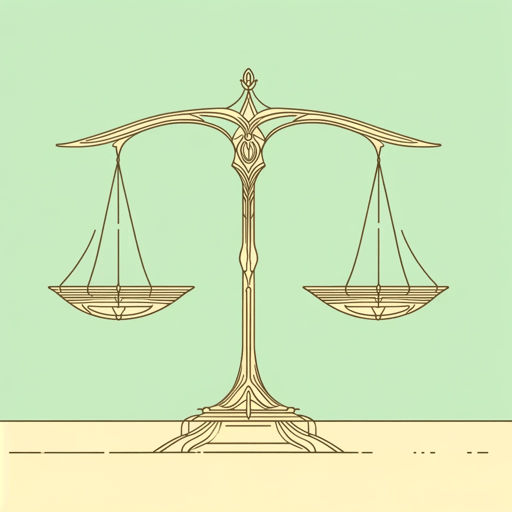
118 pages • 3 hours read
A modern alternative to SparkNotes and CliffsNotes, SuperSummary offers high-quality Study Guides with detailed chapter summaries and analysis of major themes, characters, and more.
Chapter Summaries & Analyses
Book 1, Chapters 1-3
Book 1, Chapters 4-6
Book 2, Chapters 1-3
Book 2, Chapters 4-6
Book 2, Chapters 7-9
Book 2, Chapters 10-13
Book 2, Chapters 14-16
Book 2, Chapters 17-20
Book 2, Chapters 21-24
Book 3, Chapters 1-5
Book 3, Chapters 6-9
Book 3, Chapters 10-12
Book 3, Chapters 13-15
Character Analysis
Symbols & Motifs
Important Quotes
Essay Topics
Discussion Questions
Discuss the significance of the title in terms of its themes, style , etc.
Sydney Carton is a lawyer, and several scenes in the novel take place in courtrooms. What role does the law or justice play in the novel, and how does it interact with the maticideas about redemption?
Several characters in A Tale of Two Cities seem to function largely as comic relief—Miss Pross, Jerry Cruncher , etc. Choose one of these humorous characters and explain how they contribute to the novel’s broader meaning.

Related Titles
By Charles Dickens
A Christmas Carol
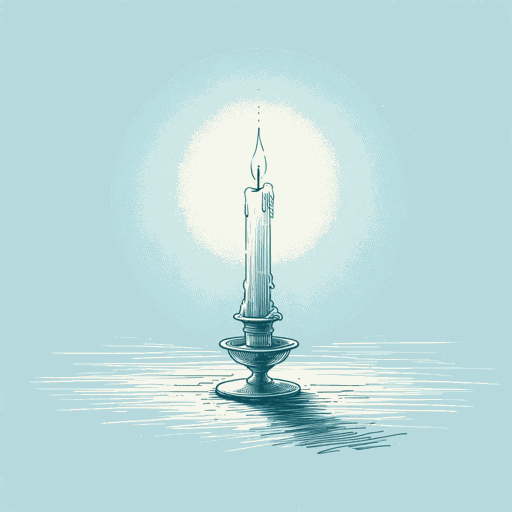
Barnaby Rudge

Bleak House
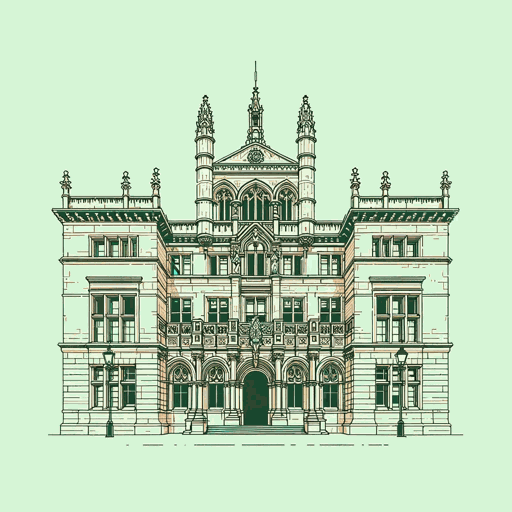
David Copperfield

Dombey and Son

Great Expectations

Little Dorrit
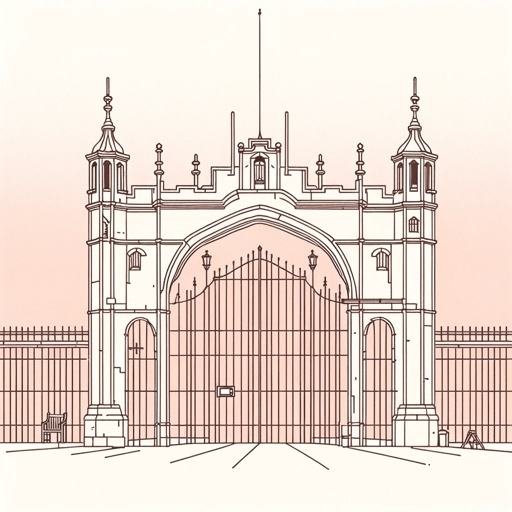
Martin Chuzzlewit

Nicholas Nickleby

Oliver Twist

Our Mutual Friend

Pickwick Papers

The Mystery of Edwin Drood

The Old Curiosity Shop
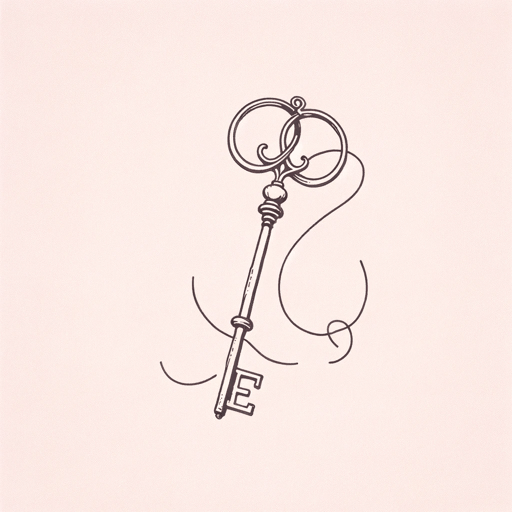
The Signal-Man
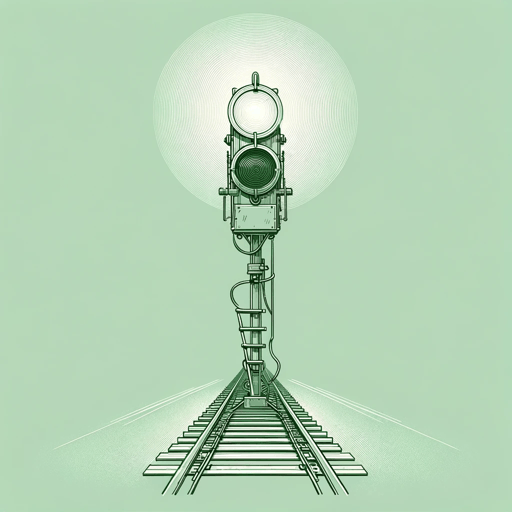
Featured Collections
9th-12th Grade Historical Fiction
View Collection
Audio Study Guides
British Literature
Historical Fiction
Victorian Literature
Victorian Literature / Period
A Tale of Two Cities
By charles dickens, a tale of two cities essay questions.
How sympathetic is Dickens towards the French Revolution? Which details illustrate his revulsion or attraction to the movement?
Compare the adherence to traditional gender roles by Lucie Manette and Madame Defarge. Is Dickens constrained by literary or social conventions, for example by making a manly woman the villain and a feminine woman the sentimental heroine?
How does religion color the attitudes of the characters in this novel? Compare Sydney Carton to Lucie Manette, or Jerry Cruncher to the Defarges.
Does the plot's reliance on fate and coincidence--including the resemblance of Carton to Darnay, the discovery of Dr. Manette's document, and the double recognition of Solomon Pross a.k.a. John Barsad by Miss Pross and Jerry Cruncher--make the story less believable or less powerful?
How does Dickens reconcile his distaste for the Revolution with his identity as a social crusader? Does he believe in the people's right to revolt under an oppressive government?
Examine the motifs of light and darkness in this novel, and trace how they relate to Carton, Lucie, Dr. Manette, and/or Madame Defarge's character development.
The most recurrent criticism of this novel is that the characters do not have the psychological depth or development of other Dickensian figures. Does Sydney Carton's transformation undermine this claim? Is this criticism really fair toward the other characters?
Examine the theme of resurrection in the novel. Which characters are brought back to life and how? Is there any situation from which resurrection is impossible?
Dickens focuses mostly on the lower class in France, but what sense does he give of the lower class in England? Why was there no comparable class struggle in the same era?
Analyze Dickens's descriptions of mobs in England and in France. How do they differ? What makes a mob what it is? How do mobs make decisions?

A Tale of Two Cities Questions and Answers
The Question and Answer section for A Tale of Two Cities is a great resource to ask questions, find answers, and discuss the novel.
The Dover Road 1775
The driver carried a gun to protect himself from highwaymen and robbers.
Look at the Attorney generals opening and closing statements in ch 3 and list 3 examples of hyperbole. What is the effect of the hyperbole how much do you trust his statements?
What does Mr.lorry mean when he says that he is a man of business?
Mr. Lorry's initial introduction of himself as the representative of Tellson's Bank hence a man of business.
Study Guide for A Tale of Two Cities
A Tale of Two Cities study guide contains a biography of Charles Dickens, literature essays, a complete e-text, quiz questions, major themes, characters, and a full summary and analysis.
- About A Tale of Two Cities
- A Tale of Two Cities Summary
- A Tale of Two Cities Video
- Character List
Essays for A Tale of Two Cities
A Tale of Two Cities essays are academic essays for citation. These papers were written primarily by students and provide critical analysis of A Tale of Two Cities by Charles Dickens.
- Resurrection
- In the Absence of Hate
- Light vs. Dark Throughout A Tale of Two Cities
- Violence in A Tale of Two Cities
- Mirror Images: Sydney Carton and Charles Darnay
Lesson Plan for A Tale of Two Cities
- About the Author
- Study Objectives
- Common Core Standards
- Introduction to A Tale of Two Cities
- Relationship to Other Books
- Bringing in Technology
- Notes to the Teacher
- Related Links
- A Tale of Two Cities Bibliography
E-Text of A Tale of Two Cities
A Tale of Two Cities e-text contains the full text of A Tale of Two Cities by Charles Dickens.
- Book I, Chapters 1-4
- Book I, Chapters 5-6
- Book II, Chapters 1-9
- Book II, Chapters 10-14
- Book II, Chapters 15-24
Wikipedia Entries for A Tale of Two Cities
- Introduction

IMAGES
COMMENTS
A Tale of Two Cities essays are academic essays for citation. These papers were written primarily by students and provide critical analysis of A Tale of Two Cities by Charles Dickens.
Indeed, the first of the A Tale of Two Cities bears that same subtitle and Dickens initially considered calling the entire work Recalled to Life.
In this regard and in one of the first substantial essays dealing with Dickens's art and thought, published a year before A Tale of Two Cities was completed, Walter Bagehot said, Mr. Dickens has ...
A Tale of Two Cities study guide contains a biography of Charles Dickens, literature essays, a complete e-text, quiz questions, major themes, characters, and a full summary and analysis.
Topic #1 Write an analytical essay that examines how A Tale of Two Cities views different forms of government. Compare the English system with the pre- and post-Revolutionary systems in France.
Read our detailed notes on A Tale of Two Cities, a famous novel by Charles Dickens. Our notes cover A Tale of Two Cities summary, themes, and analysis.
A Tale of Two Cities study guide contains a biography of Charles Dickens, literature essays, a complete e-text, quiz questions, major themes, characters, and a full summary and analysis.
A Tale of Two Cities Made-to-order essay as fast as you need it Each essay is customized to cater to your unique preferences + experts online Get my essay 3 Fate in a Tale of Two Cities 1 page / 644 words Charles Dickens' 1859 novel, A Tale of Two Cities, explores the concept of fate through its vivid portrayal of the fates of its characters.
A Tale of Two Cities, novel by Charles Dickens, published both serially and in book form in 1859. The story is set in the late 18th century against the background of the French Revolution. Although drawn from history, the novel offers more drama than accuracy. Learn more about A Tale of Two Cities in this article.
The story 'The Tale of two Cities' written by Charles Dickens is considered to be dedicated to the disclosure of French Revolution period; it is the classic work representing the archetypal characters through the concepts of good and evil interaction, physical and moral courage. The paper will be concentrated on the analysis of the story ...
A Tale of Two Cities at Wikisource. A Tale of Two Cities is a historical novel published in 1859 by Charles Dickens, set in London and Paris before and during the French Revolution. The novel tells the story of the French Doctor Manette, his 18-year-long imprisonment in the Bastille in Paris, and his release to live in London with his daughter ...
Critical Overview. A Tale of Two Cities is perhaps the least characteristic of Charles Dickens's works. Unlike both his earlier and his later novels, which are largely concerned with events within ...
Thanks for exploring this SuperSummary Study Guide of "A Tale of Two Cities" by Charles Dickens. A modern alternative to SparkNotes and CliffsNotes, SuperSummary offers high-quality Study Guides with detailed chapter summaries and analysis of major themes, characters, and more.
1. Discuss the theme of the likeness of people despite differences of place or time. Is this relationship useful only within the context of A Tale of Two Cities, or can it be applied to other ...
A Tale of Two Cities study guide contains a biography of Charles Dickens, literature essays, a complete e-text, quiz questions, major themes, characters, and a full summary and analysis.
A TALE OF TWO CITIES Written in 1859, A Tale Of Two Cities by Charles Dickens begins in 1775 in a concerning England and pre-revolutionary France. They both suffer from poverty, inequity, violence, too many heads in guillotine and unfair ruling of elites. As the story evolves, extremist revolutionary movements in France make England appear as a ...
A Tale of Two Cities study guide contains a biography of Charles Dickens, literature essays, a complete e-text, quiz questions, major themes, characters, and a full summary and analysis.